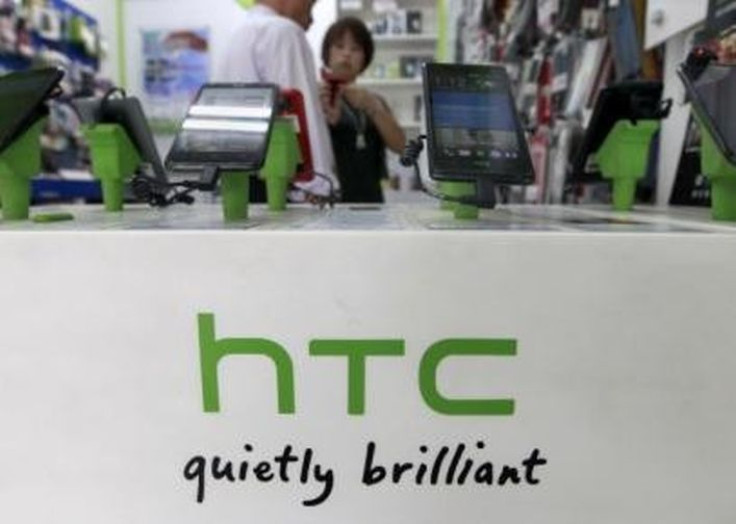HTC Desire Eye vs. HTC One M8 – Specifications, Features And Price Comparison

The HTC Desire Eye, aka HTC's selfie phone, has recently been unveiled at a special event and the release date is pegged for November. The HTC One M8, on the other hand, was released in March. Readers who are interested in purchasing the 2014 flagship HTC One M8 or the latest HTC Desire Eye should check out this comparison.
Display, Exterior And Size
The HTC Desire Eye comes with a 5.2-inch LCD display and 1,080 x 1,920 pixels resolution, whereas the HTC One M8 features a relatively smaller 5.0-inch Super LCD3 display and shares the same resolution with the Desire Eye. While the One M8 comes with a pixel density of 441 ppi, the Desire Eye smartphone clocks 424 ppi.
When it comes to design, the 2014 flagship One M8 comes with premium-look written all over the device. The handset boasts a brushed metal design enveloped in a wrap-around unibody structure. The device has curved corners and it fits comfortably on the hands. This well-constructed smartphone is completely made of metal, unlike the original HTC One's body that has 70 percent aluminium and 30 percent plastic construction, says CNet. The Desire Eye, on the other hand, features high quality plastic chassis. Plus, HTC has put in lots of effort to improve the front and the rear cameras and hence, the Duo Camera feature seen in the flagship One M8 is removed. Additionally, the handset comes with a physical camera shutter button. Generally speaking, the HTC Desire Eye is a worthy enhancement of the One M8, opines ZDNet.
Speaking of size, the thickness and weight of the Desire Eye handset are 0.33-inch and 154 g respectively, while the HTC One M8 is 0.37-inch thick and weighs 160 g. Therefore, the latest Desire Eye handset is both lighter and thinner than the One M8.
Hardware, Software And Memory
Both the HTC devices are powered by the same quad-core (Qualcomm Snapdragon 801) Krait 400 processor, clocked at 2.3 GHz and backed by 2 GB of RAM. Moreover, the HTC One M8 runs on Android 4.4.2 KitKat OS that is upgradable to v4.4.3, while the Desire Eye runs on Android 4.4.2 KitKat OS. Plus, both the handsets utilise HTC's Sense 6 UI on top of Android OS.
When it comes to memory, the One M8 provides 16 GB and 32 GB of internal storage choices, whereas the Desire Eye comes equipped with 16 GB of storage. Additionally, both the devices support expandable storage option up to 128 GB.
Camera And Battery
The latest HTC Desire Eye sports a powerful 13 MP rear-facing camera with dual-LED (dual tone) flash. In addition, the handset houses a killer 13 MP front-facing unit as well, staying true to the moniker selfie phone. Nonetheless, the unique feature is the frontal dual-LED (dual tone) flash to capture incredible selfies. Also, Desire Eye's front and back camera units can capture 1080p videos.
Additional features include a Split Capture option that can split the image into 50:50 by clubbing the images shot with the help of the front as well the rear cameras. The Crop-Me-In feature can be used to implant the user's image into any other picture, similar to using Photoshop to enhance the image. Other significant camera-specific apps include HTC Eye Experience and HTC Zoe, writes GSM Arena.
Moving on to One M8's camera, a unique 4 UltraPixels primary unit with dual-LED (dual tone) flash is housed on the rear. Specifically, the HTC One M8 comes equipped with 2 lenses to capture picture-perfect images, hence the name Duo Camera. Plus, there is a 5 MP snapper at the front for selfies. Furthermore, the One M8 handset houses a good Li-Ion 2600 mAh unit, whereas the Desire Eye settles for a relatively inferior Li-Ion 2400 mAh unit.
Additional Features
1. Both the handsets come with HTC BoomSound speakers. Plus, the Desire Eye features water- and dust-proof exterior (IPX7 certified), while the One M8 doesn't.
2. The Desire Eye comes with a microphone housed near the front-facing camera. Other than the frontal microphone there is one at the back of the handset and another one on the tail-end of the device. This means, a total of three microphones are equipped to provide quality audio reception complemented by the noise cancellation feature, says GSM Arena.
3. Both the HTC smartphones employ nano-SIM. In addition to the standard connectivity options, both the smartphones support NFC and 4G LTE. While the One M8 supports Infrared port, the Desire handset doesn't.
4. The Desire Eye comes with HTC's Zoe app, which provides collaborative video editing option. In addition, the Zoe app can pair with "RE," the brand new action camera from HTC. Very interestingly, Android-based device users across the globe can benefit from the Zoe app, because the app is not exclusive to HTC devices. Adding cherry on top, HTC Zoe's Apple iOS app will be released towards the end of this year.
5. It is worth noting that, the HTC Eye Experience camera app is not exclusive to the HTC Desire Eye. The company will roll out the app to HTC One (M8), One (E8), One Mini 2, One Max, One Remix, One (M7), One Mini, Desire 612 and Desire 816 in the near future.
Price
The HTC One M8 (16 GB) model is priced at AU$609.95. The HTC Desire Eye, on the other hand, is an AT&T-exclusive device in the U.S. And it is priced at 529 euros in France that roughly translates to US$668 and AU$767, says NWE.
Also Read
1. 7 Million Dropbox Usernames And Passwords Compromised; Third-Party Services Blamed Yet Again - [Read]
2. $15,854 'Vertu for Bentley' Smartphone Features iPhone 6-Like 4.7-Inch Display, 64GB Memory & Sapphire Crystal Protection - [Read]
3. Move Over Xiaomi, Apple iPhone 6 Has A New Admirer In Ultra-Thin 'Lenovo Sisley' Smartphone - [Read]






